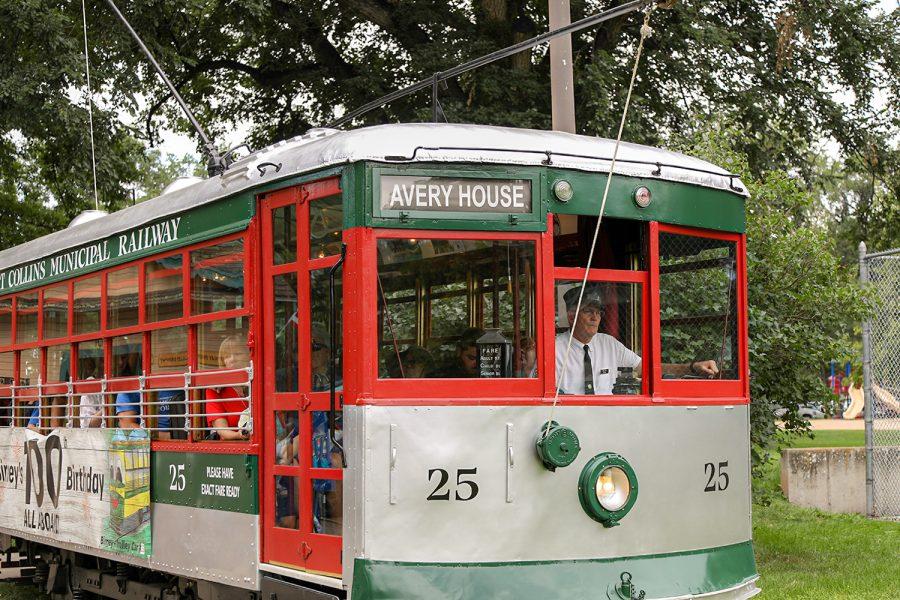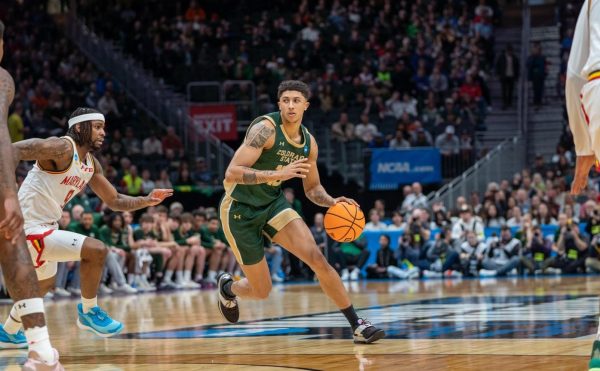Embrace the last days of summer on the Fort Collins Trolley
Collegian | Serena Bettis
Motorman Greg Koch guides the Fort Collins Trolley car 25 out of the City Park Depot Aug. 21. The historic trolley operates on weekends during the summer season and takes a 30-minute round-trip ride down Mountain Avenue.
August 31, 2022
For a quintessential Fort Collins summer experience, hop on the historic Fort Collins Trolley before fall officially begins.
A trolley ride costs $2 for adults and offers a refreshing trip (when the weather is nice) down Mountain Avenue from City Park to Old Town. Trolley passengers can ask for a transfer ticket and get off at the stop on Howes Street and Mountain Avenue, explore Old Town or grab some lunch and then get back on the trolley toward City Park.
“Basically, you are riding a 100-year-old electric vehicle,” volunteer conductor Jim Zdunek said during a trolley ride Aug. 21.
Fort Collins has two restored trolleys in operation — car 21 and car 25 — and each ride comes with a history lesson narrated by volunteers.

In 1907, the Denver and Interurban Railroad built a streetcar line in Fort Collins with plans to eventually connect towns along the Front Range. However, the company went into receivership (a way to avoid bankruptcy) in 1918, and in 1919, the City of Fort Collins voted to buy the system so it could operate once more.
Zdunek said Fort Collins had a population of about 7,000 in 1907 and was one of the smallest towns in the country to have its own trolley system. According to the Fort Collins Trolley website, the system operated on a line 6.2 miles long.
When the city bought the trolley system in 1919, it decided to use Birney Safety Cars instead of the trolleys the Denver and Interurban Railroad had. Zdunek said the previous trolleys took two people to operate, but the Birney Safety Car only requires a single motorman.
“It’s a Birney Safety Car because it has a number of features,” Zdunek said. “For instance, you might have heard a little compressor going on and off (in the car). It basically stored compressed air, so in case something happened, like maybe we lost electricity up above, we have some compressed air to do things like start the brakes up, open the doors — that sort of thing.”
The trolley operated in Fort Collins from 1919-51 and cost five cents per ride during that time, Zdunek said.
“Some of the things that they used to do — because it was a small town in the early days — was parents would take their children and let them sit in the car, and they’d go out shopping, and the children would be riding around,” Zdunek said. “So basically, for five cents, they had babysitters.”
Jeanne Berger, who has volunteered as a conductor and depot agent for more than 10 years, said the trolley systems stopped operating once people began to rely more on personal automobiles and a bus system.
“(Car 21) just kind of sat abandoned until 1977, when the women’s Junior League (of Fort Collins) — I’m proud of that — started the restoration on the car,” Berger said. “It didn’t start running the way it is now, just as a tourist thing until 1985.”
To hear more about the history of the Fort Collins Trolley and see the restored historic cars, head down to the City Park Depot at 1501 W. Oak St. from noon to 5 p.m. on Saturdays, Sundays and national holidays until Sept. 25. The trolley has multiple boarding locations on its route, but to guarantee a seat, it’s best to start at City Park.
Reach Serena Bettis at entertainment@collegian.com or on Twitter @serenaroseb.






